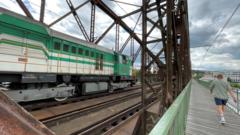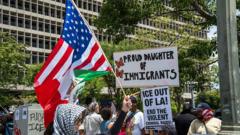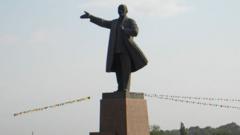In the heart of Copenhagen, the spirit of Nella Larsen, a distinguished Harlem Renaissance novelist, continues to reverberate. Larsen, the author of "Quicksand," intricately wove her experiences as a mixed-race adolescent in this vibrant city into her narrative, which remains influential today.
Larsen's character, Helga Crane, encounters the reactions of locals during her strolls, emphasizing the noticeable exoticism of her presence – a sentiment that resonates less fiercely with contemporary visitors to the city, where cultural diversity is prevalent. Yet, the passage of time has not muted the echoes of "Quicksand." Many landmarks and the true essence of Copenhagen remain recognizable, serving as a testament to Larsen's impactful childhood experiences that influenced her writing.
As she navigated Denmark's urban landscape, Larsen absorbed the daily rhythms of life—bicyclists weaving through the streets and the architectural beauty that UNESCO recently celebrated as the World Capital of Architecture in 2023. While Denmark frequently ranks high in global happiness indices, “[Larsen's] characters exemplify the complexity of identity, longing, and belonging that transcends geographical borders.”
Although Larsen did not document her everyday life explicitly, her biographers emphasize the autobiographical nuances in "Quicksand." Insights from historical records and genealogical research validate the close ties between her life in Copenhagen and Helga Crane's experiences. Born to a Danish mother and Caribbean father, Larsen's background added depth to her narratives, depicting the intersections of race and identity.
Returning to the United States in 1912, she channeled her experiences into "Quicksand," wherein the Copenhagen chapters intricately capture the ambiance of her formative years. Upon its release in 1928, the novel received wide acclaim, including praise from W.E.B. Du Bois, establishing Larsen as a voice of her generation. Her works reveal a complex exploration of race and identity, ensuring her legacy endures in contemporary literary discussions.
Thus, as Copenhagen embraces its role as a multicultural hub, the city's connection to Larsen's life continues to inspire new generations to explore the rich tapestry of experiences that shape narratives across time. Her journey through Copenhagen remains a vital piece of our understanding of cultural evolution and artistic expression, inviting many to retrace similar paths in pursuit of identity and belonging.
Larsen's character, Helga Crane, encounters the reactions of locals during her strolls, emphasizing the noticeable exoticism of her presence – a sentiment that resonates less fiercely with contemporary visitors to the city, where cultural diversity is prevalent. Yet, the passage of time has not muted the echoes of "Quicksand." Many landmarks and the true essence of Copenhagen remain recognizable, serving as a testament to Larsen's impactful childhood experiences that influenced her writing.
As she navigated Denmark's urban landscape, Larsen absorbed the daily rhythms of life—bicyclists weaving through the streets and the architectural beauty that UNESCO recently celebrated as the World Capital of Architecture in 2023. While Denmark frequently ranks high in global happiness indices, “[Larsen's] characters exemplify the complexity of identity, longing, and belonging that transcends geographical borders.”
Although Larsen did not document her everyday life explicitly, her biographers emphasize the autobiographical nuances in "Quicksand." Insights from historical records and genealogical research validate the close ties between her life in Copenhagen and Helga Crane's experiences. Born to a Danish mother and Caribbean father, Larsen's background added depth to her narratives, depicting the intersections of race and identity.
Returning to the United States in 1912, she channeled her experiences into "Quicksand," wherein the Copenhagen chapters intricately capture the ambiance of her formative years. Upon its release in 1928, the novel received wide acclaim, including praise from W.E.B. Du Bois, establishing Larsen as a voice of her generation. Her works reveal a complex exploration of race and identity, ensuring her legacy endures in contemporary literary discussions.
Thus, as Copenhagen embraces its role as a multicultural hub, the city's connection to Larsen's life continues to inspire new generations to explore the rich tapestry of experiences that shape narratives across time. Her journey through Copenhagen remains a vital piece of our understanding of cultural evolution and artistic expression, inviting many to retrace similar paths in pursuit of identity and belonging.





















